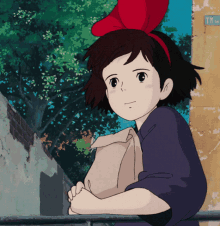As a result of climate change and other human-caused environmental problems, world animal populations have decreased drastically and some populations have disappeared entirely. If you would like to learn more about this massive issue that is currently threatening the entire world as we know it, read on.
The first thing to know is that worldwide there are about 2 million known animal species. Climate change could cause the extinction of half of them[2].

Image Credit: Glen Carrie from Unsplash
In other words, we humans are causing our own extinction event that is threatening the very existence of half of all animal species. How can this even be possible? Previous mass extinctions have been caused by unimaginably huge outpourings of lava.
The Permian extinction event was caused when massive portions of Siberia erupted and was buried in lava flows almost a mile deep. Of course, the Permian extinction caused the destruction of 99% of all life which is not very close to half of all species, but still far closer than anyone would like[1].

Image Credit: USGS from Unsplash
Still, mass extinctions could only happen after inconceivably huge amounts of damage was done to the biosphere. Now, the extinction that is going on today is not quite a mass extinction but it must still mean that we are causing immense amounts of damage to the natural world. That, though extremely unfortunate, is true.
Here are the numbers:
- In the past 50 years, there has been a global average decline in monitored animal populations of 73%[2].
- Half of all species could go extinct as soon as 2050[3].
- For all species where the population sizes are known, 48% are decreasing in population, 49% are stable, and 3% are increasing[4].
- Around half of all known insect populations are decreasing in size[5].
- One in every eight bird species are threatened with extinction worldwide[6]. In North America the numbers rise to two out of every three avian species[7].
- Oceanic rays and shark populations have fallen by 71%[8].

Image Credit: McGill Library from Unsplash
However, you may be wondering if all of the species threatened by the effects of climate are important enough to focus on and protect. Surely there are higher priorities than ensuring species such as the Montandon’s Glandular Bush Cricket from going extinct. The answer to that is that all species are an integral and important part of the world’s biosphere, but admittedly some are more important than others. Even so, the world’s natural ecosystems are highly connected and the loss or decline of single species can weaken an ecosystem or even cause it to collapse in some cases.
One example is that sharks are keystone species and support entire food chains. Nonetheless we are killing a hundred million of them each year[9]. If enough sharks in a coral reef ecosystem are killed, then because of the way the food chain is constructed algae blooms grow out of control and kill the corals that make up the reef. All of a sudden a piece of an ecosystem that supports ¼ of all known oceanic species at some point in their lives is gone[10].

Image Credit: Francesco Ungaro from Unsplash
Unfortunately, whether sharks are stopped from being hunted or not in coral reefs does not change the fate of the coral reefs themselves by much. At 2 degrees Celsius, 99% of all coral reefs are expected to die off as the waters around them become too warm. The world is predicted to warm by at least 2 degrees Celsius[11].
Another important animal species that is facing decline from climate change is the honeybee. An insect that pollinates a third of the food we eat[12]. In highly polluted areas these insects get covered in pollution which gives them all sorts of negative health benefits including a shorter lifespan and interrupting their ability to find flowers[13].

Image Credit: William Warby from Unsplash
As well as that, increased levels of carbon dioxide increases the growth rate of certain plants, some of which bees depend upon. While this may sound like a good thing, the increased growth rate is not matched by increased levels of proteins and other nutrients. In other words, bees will have to gather even more pollen to get the nutrients they need. Already, the goldenrod, an important food source for North American bees, has lost a third of its protein content since the Industrial Revolution because of this increased growth rate[14].
All of these problems are then compounded with the fact that the climate crisis exists and is currently threatening the honeybee’s habitat with extreme rainfall, and increased numbers of droughts, fires, and floods. It is no wonder that bee populations are currently facing a dramatic decline in many areas[15].
There is some good news for global animal populations though. It is quite possible that global greenhouse gas emissions are peaking, which is the first step in making sure that the world does not warm beyond 2 degrees Celsius[16].
Keeping the world at least at 2 degrees Celsius temperature rise while not a good option would still dramatically lower the number of animal species that would be predicted to otherwise go extinct. However, for that to happen, more must be done to make sure that the world does lower its emissions and avoid the worst effects of climate change in time.
There are many estimates for how many species are predicted to go extinct. For example, some sites say that 30% of species will go extinct at around 5 degrees Celsius of warming while others put the estimate at less than 5% of species[17],[18]. However, the important thing to know here is that even a small number of species going extinct can be very bad. Dramatic declines in many animal species can still greatly damage an ecosystem which is exactly what is predicted to occur for many species.















.jpg)